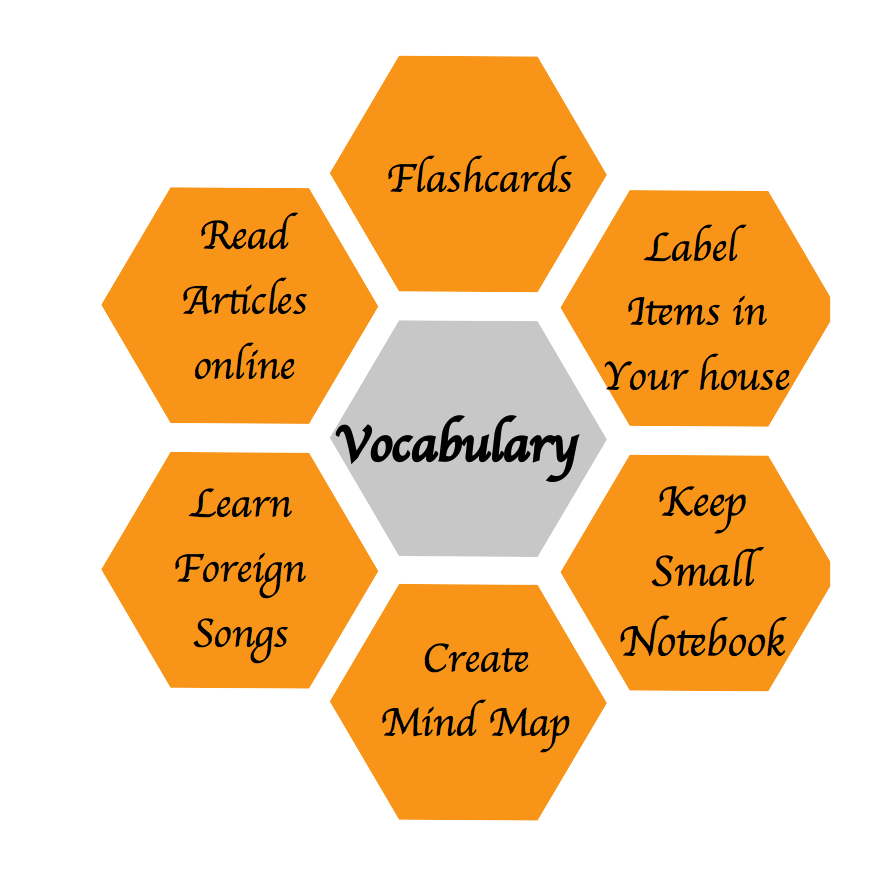6 Top Ways to Learn and Practice Vocabulary
 Words and phrases are the building blocks of a language, but you also need the know-how for putting them together.
Words and phrases are the building blocks of a language, but you also need the know-how for putting them together.
So, the best approach for learning a new language is acquiring some language basics (useful vocabulary, an understanding of how to create sentences, essential grammar, the sounds of the language).
Once you've done that, you'll want to increase your vocabulary, right? The more vocabulary you have, the better you'll be able to express yourself.
Here are 6 proven ways to learn and practice vocabulary:
1. Use Flashcard Programs
Programs using flashcards are available for free or for a fee to anyone with a computer, tablet, or smartphone. The most popular program is probably memrise.com. But quizlet, anki, antosch-and-lin also have good features and plenty of fans.
One reason good flashcard programs work well is that they are based on the principle of spaced repetition and prompt active recall. The key is to practice often and to sneak in practice time whenever you need a break, are waiting in line, or have an extra ten minutes.
2. Label items around your house
Learning the words for items that surround you in daily life is an excellent idea. By labeling these items in the language you're learning, you'll easily build up useful vocabulary and keep the foreign words in your memory. You could even add some relevant short phrases.
Write your own post-it notes or use a program that provides labels you can download.
3. Keep a small notebook
Writing down words by hand is still the best way to embed them in your memory. Handwriting seems to activate deeper learning.
According to Stanislas Dehaene, a psychologist at the Collège de France in Paris, in What's lost when handwriting fades: “When we write, a unique neural circuit is automatically activated. ... [And with this] learning is made easier.”
This YouTube video gives you a few cool tips and tricks on how to keep a vocabulary notebook.
4. Create a Mind Map
A mind map is an ideal way to cluster and organize your vocabulary. Visuals, colors, diagram-links all reflect how the brain thinks and they reinforce how the brain makes associations.
The combination of words and images you create yourself activates both sides of your brain. Such mind maps are a great way to individualize the way you learn.
The following video by the creator of Mind Maps contains a host of ideas and tips.
5. Learn Songs in your new language
Music helps to activate the whole brain for learning. So it's no surprise that songs are particularly suited for immersing you in a foreign language.
There are various reasons for that: songs help with pronunciation and memory, and teach you the rhythm and flow of a new language. Also, because you can easily find songs you enjoy, you're likely to go back to them again and again.
As the popular polyglot Benny Lewis suggests in his blog post "Sing to learn languages": "A good approach is to memorize the lyrics of a song and practice them repeatedly until they've become second nature."
(On our own blog, we have a few suggestions for French, German, Italian and Spanish songs.)
6. Read news articles other texts online
You can easily read news articles and other texts online with a browser extension that provides you with the translation of individual words and their pronunciation. For example, Google's "Language Immersion Chrome Extension".
A similar idea is behind Steve Kaufmann's LingQ.com site. By reading online, and tagging plus seeing the translation of the words you don't know, you can increase your vocabulary rapidly, especially if you use the linked flashcards to practice them later.
These 6 Tips aren't in any special order. Everyone has different preferences. But if you combine some of these tools in a way that works for you - and if you have fun using them - they're bound to give your vocabulary a huge boost.
